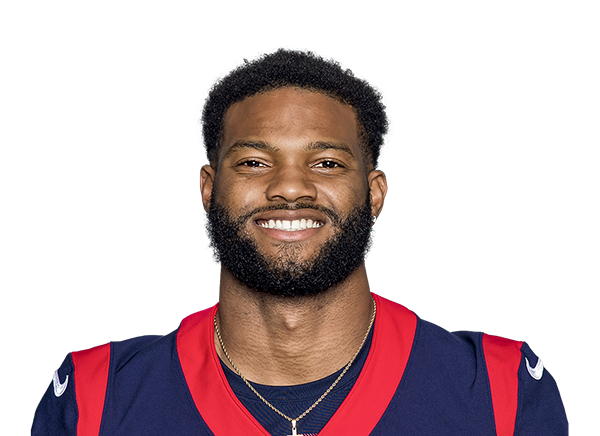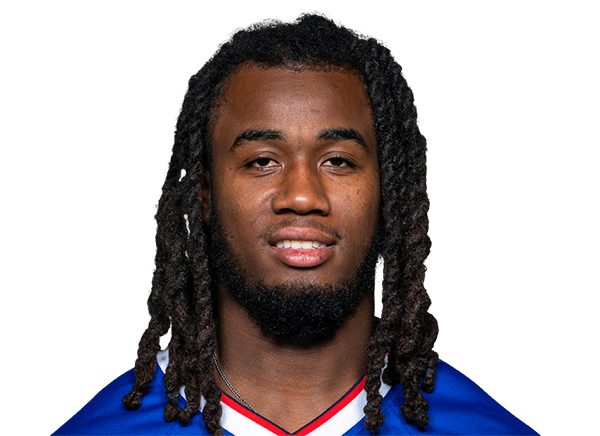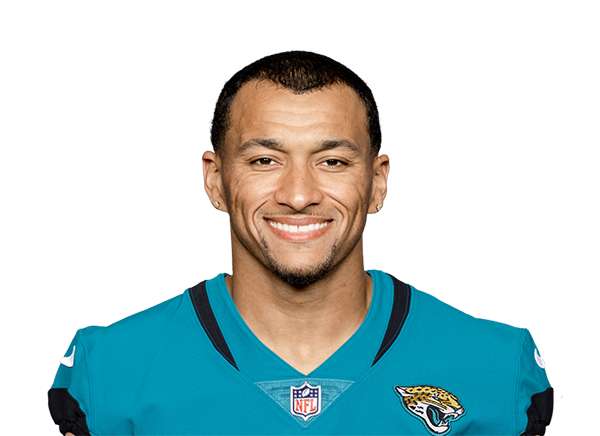Dynasty GAAP Memo: Sam Darnold’s Recession and Recovery

If you have read my work before, you know I write in the form of “accounting memos” and apply accounting and finance themes to dynasty fantasy football. For anyone who has not been exposed, the format is very standard. Each memo will start with the “purpose.” Next, it will supply background and then outline the applicable “guidance,” or accounting literature utilized. Last will be the analysis and conclusion. The goal is to state the issue and quickly address it. My write-ups will follow this same logic. To summarize, welcome to “Good at Analyzing Players” or “GAAP”, a play on “Generally Accepted Accounting Principles” (and yes, my wife did come up with it).
Purpose
The purpose of this memo is to discuss Sam Darold’s breakout through week four and his dynasty value.
Background
There has been a recurring theme with quarterbacks in the NFL the last three seasons that I have never seen before, and it is worth noting and examining. With the election in full swing, I am sure we have all heard discussions about the potential for an economic “recession.” For context, a recession is a significant, widespread, and prolonged downturn in economic activity. A downturn must be deep, pervasive, and lasting to qualify as a recession. The good thing about the economy is that most recessions are short-lived at around 11 months in the United States (the “Great Recession” lasted 43 months). Comparably, we rarely see a dynasty asset recover from a prolonged recession, especially at the QB position… until recently.
This memo will explore past QB recessions and assets who were able to climb out of them and project this upon Sam Darnold and evaluate his dynasty value.
Resources:
- Sleeper: Great interface for looking up historical statistics
- DLF Dynasty Rankings: Best dynasty rankings in the Industry
- DLF Average Draft Position (“ADP”) Data: Best resource to gauge current player value. Based on real dynasty startups.
- Investopedia: World’s leading source of financial content on the web.
Analysis
As mentioned above, we are going to explore past examples of “QB recession recoveries’ and then apply those observations to Darnold in 2024 and the impacts on his dynasty value. See the discussion below.
Past Examples: Geno Smith, QB SEA, and Baker Mayfield, QB TB
The first modern example of a QB recovering from a recession was in 2022 with Geno Smith. For a brief history lesson, Smith was drafted in the second round of the 2013 draft. He was the Jets starter for the next two seasons. After which, Smith entered a prolonged recession. He was demoted to backup duties for the remainder of his rookie contract. He then bounced around the league until landing in Seattle as a backup to Russell Wilson. He served in that role in 2019, 2020, and 2021.
Prior to the 2022 season, Wilson was traded and Smith became the starter. In 2022, Smith erupted in his first season as a starter since 2014. He passed for 4,282 yards, threw for 30 TDs, and then ran for another 366 yards and another TD on his way to a QB5 overall finish. This production led to him signing a three-year, $75m contract. Since then, he has continued to have success and is currently QB8 in 2024 while leading the Seahawks to a 3-1 start. This firmly cements him as a more stable asset at the position with elite weapons in DK Metcalf, Jaxon Smith-Njigba, Kenneth Walker, Zach Charbonnet and Tyler Lockett. His ADP below clearly indicates his recovery (and potentially is currently underpriced).
The second example was in 2023 with Baker Mayfield. More recently, but Mayfield was selected first overall in the 2018 NFL Draft by the Cleveland Browns. He found success in his early career with passing yards over 3,500 in his first three seasons as a starter for the Browns. However, after that, he regressed and was eventually traded to the Carolina Panthers prior to the 2022 season. During this, he was cut and then signed by the LA Rams. During his short tenure with the Rams, he flashed some of the ability that made him the first overall pick.
That offseason, he leveraged those heroics and signed with the Tampa Bay Buccaneers to compete with Kyle Trask during camp. Mayfield went on to win the job and had his first 4,000-yard season to go with 28 TDs and ultimately finish as QB10 on the season in fantasy. Like Smith above, this late breakout garnered Mayfield to receive a three-year, $100m contract. Fueled by Mike Evans, Chris Godwin, and Bucky Irving (sorry Rachaad White owners), Mayfield is currently QB3 in 2024. The table summarizes his recession and recovery by examining his ADP.
In both instances, there are a couple of observations that jump off the page. These observations are outlined below:
- Early Draft Capital: In both examples, Smith and Mayfield were both early-round picks. This is a positive indicator of talent, physical ability, and prior collegiate success. In the NFL, this oddly matters, and early-round picks are more likely to get second, third and sometimes fourth chances.
- Skill Position Talent: During their recession breakout seasons, both Smith and Mayfield had a gambit of weapons at their disposals (DK Metcalf, Tyler Lockett, Mike Evans, Chris Godwin, etc.). While it is true that elite QBs elevate the players around them, it is also true that surrounding talent can elevate a QB as well.
- Good Team Situations: We are starting to see more and more that players are more inclined to succeed when playing for certain teams. Justin Fields struggling in Chicago and being 3-1 for the Pittsburgh Steelers is a good example of this. In the examples above, Smith and Mayfield landed in well-run and stable franchises. The Seattle Seahawks made the playoffs 10 times in the 14 seasons under Pete Carroll (2010-2023). Comparably, the Bucs were in the playoffs in 2020, 2021, 2022, and 2023 with a Super Bowl victory in 2020. This prolonged success indicates good management, good drafting, and coaching all of which contribute to a QB’s on-field success.
Below we will apply and evaluate these indicators to Darnold’s 2024 season.
Current Example: Sam Darnold, QB MIN
To begin, let’s evaluate where we are today. In the 2023 off-season, Darnold signed a one-year, $10m contract with the Minnesota Vikings. The clear intent of this contract was for Darnold to be the bridge QB until JJ McCarthy, who the Vikings drafted tenth overall this year, was ready. That temporary plan went off the tracks during the off-season when McCarthy tore his meniscus during the preseason. Thus, Darnold became the Vikings unquestioned starter for the entirety of the 2024 season.
Since then, Darnold has led the Vikings to a 4-0 start. Not only that, but he has passed for 932 yards and an NFL-leading 11 TDs. If you extrapolate that over the 17-game season, he is on pace for almost 4,000 yards and over 46 TDs. From a fantasy perspective, he is QB4 on the season and currently fifth in the Vegas odds to win the MVP. He is also only 27 years old. That is younger than Joe Burrow, Patrick Mahomes, and Josh Allen. If we took all this at face value, he would be a player that we were all climbing over one another to get on our dynasty rosters. However, there are still a lot of skeptics. This is due to the recession theme above. His ADP below and QB34 ranking on DLF do a good job indicating this.
Based on this, fantasy managers should explore the observations from Smith and Mayfield above to evaluate if Darnold is more “2024 Baker Mayfield” or “2023 Josh Dobbs” (i.e., flash in the pan).
Early Draft Capital:
If we go back into our time machine to 2018, Sam Darnold was the third overall pick in the NFL draft by the New York Jets. During the draft process, he was compared to NFL greats like Philip Rivers and Andrew Luck due to his size, arm strength, accuracy and other accolades coming out of USC. Over the course of his rookie contract, he was up and down. However, there were glimpses of that ceiling. See the four-game stretch in 2021 below:
We also have a low floor like the “Seeing Ghosts” game. This up-and-down tenure led the Jets to trade Darnold to the Carolina Panthers. His tenure continued to be rocky there for two seasons before joining the San Francisco 49ers in 2023 where he rekindled some of his early career magic in backup duties. Hence, he clearly got the second, third, and fourth chance because of his draft capital.
Skill Position Talent:
The skill position discussion for the Vikings could start and end with all-world WR, Justin Jefferson. However, that would be selling his other weapons short. Darnold has been successful with just Justin Jefferson and Aaron Jones primarily. Jordan Addison has been dealing with an ankle injury and has only played limited snaps in two games this season. TJ Hockenson is also slated to start practicing this week and could return by week seven.
All to say, his supporting cast thus far has been good. By midseason, it could be great.
Good Team Situations:
Recently, the Vikings have been one of the more consistent teams in the NFL under Mike Zimmer from 2014 to 2021. However, the offense exploded when Kevin O’Connell took over in 2022. They have been good, but not great by NFL standards and were as good as their QB would take them. Darnold is getting that opportunity in 2024 and, so far, he is running with it.
Conclusion
Based upon the considerations above, I believe Sam Darnold will get a contract next offseason to be an NFL team’s franchise QB similar to his recession-recovering predecessors. Normally, I would guess his current team would award him that contract. However, in the examples above, that NFL team had not just spent a top-ten NFL pick on another QB the year prior. Due to this, it is a little bit more complex. In the words of John Madden, “If you have two quarterbacks, you actually have none.” Due to this, Darnold has a couple of hypothetical outcomes:
- Continues this Pace wins MVP or Playoff Game – If he does this, I am not sure the Vikings can let him test free agency. He could get franchise tagged (which is projected to be over $42m). The more likely situation is he gets a three-year (two years guaranteed) deal for $100m to $120m like Mayfield. Then JJ McCarthy gets the Michael Penix treatment.
- Hot and Cold Season – If he stumbles throughout the season, I believe he will have shown enough for another team besides the Vikings to give him a two-four-year contract. Thus, still stabilizing his value in dynasty (especially in superflex leagues).
- Josh Dobbs 2.0 – This is saying this four-game run is a fluke. I really do not think this will happen. The Vikings coaching, skill position players, and system will fuel prolonged success.
My gut says that his outcome will be somewhere in between outcome one and outcome two. He will fall down to earth slightly and finish the season between QB8 and QB14. With that showing, I do think he garnishes a long-term (or expensive franchise tag) next offseason from someone (hopefully the Vikings). Thus, cementing him as more than just a “one-year rental” at QB and a more stable dynasty asset. In Superflex leagues, I have been aggressively trying to buy shares. I was able to add multiple shares for a single second-round rookie pick after week two. Now, I bet it would take a couple of seconds, which I would still pay. At that price, he is the perfect addition in any superflex league due to his youth. I am not yet paying a first, but if the success continues, that might be cheap in hindsight.
All in all, I’m buying Darnold. Look what Smith did when he escaped the Jets and what Mayfield did when he escaped the Panthers.
“I’m seeing ghosts.”
- Dynasty GAAP Memo: Post-Mortem Rookie Re-Draft - December 12, 2024
- Dynasty GAAP Memo: Buying The WR Dip Or Falling Knife? - November 14, 2024
- Dynasty GAAP Memo: Sam Darnold’s Recession and Recovery - October 3, 2024




























































